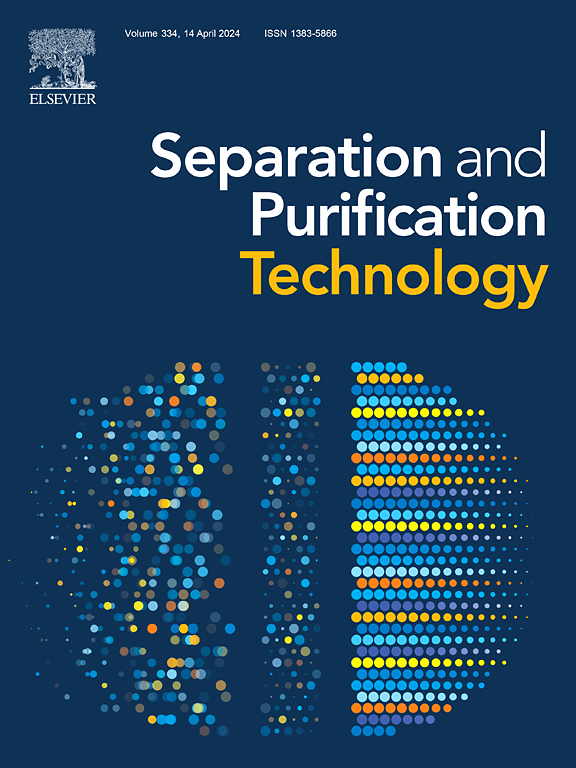Analytic hierarchy process method for rural domestic sewage treatment processes − a case study of Baiyangdian in China
IF 8.1
1区 工程技术
Q1 ENGINEERING, CHEMICAL
引用次数: 0
Abstract
Comprehensive evaluation of rural sewage treatment technologies is crucial for optimizing resource utilization, mitigating environmental impacts, and guiding sustainable development strategies in the context of rural infrastructure challenges. However, the comprehensive evaluation of rural domestic sewage faces several challenges (e.g., lacking of cost-benefit analysis, limited public participation, and insufficient assessment of social impacts). In this research, an analytic hierarchy process integrated with life cycle assessment (LCA) is proposed to comprehensively evaluate the environmental, economic, technological, and societal impaction of typical rural domestic sewage treatment technologies. Anaerobic-anoxic–oxic + membrane bio-reactor (A2O-MBR, M1), modified A2O-MBR (M2), pre-denitrification-anaerobic-anoxic–oxic + moving bed biofilm reactor (A3O-MBBR, M3) and modified A3O-MBBR (M4) are selected as typical treatment technologies. Under LCA, M4 shows the smallest environmental impact (1.73E-10), indicating that increasing the sludge reflux rate and the nitrification reflux ratio can effectively mitigate environmental harm, minimize impact, save energy and reduce consumption. Taking all factors into consideration, the indicators (i.e., global warming potential (1.35 %), total cost of sewage treatment (3.19 %), nitrogen removal efficiency (2.09 %), and localized infrastructure (1.56 %)) significantly influence the comprehensive evaluation. The multi-objective comprehensive assessment demonstrated that M4 (6.88) is the optimal process, followed by M1 (3.73), M3 (5.74) and M2 (5.95). This research provides a reference for the government and enterprises to reform the rural domestic sewage treatment technology from a multi-objective perspective.


农村生活污水处理过程的层次分析法——以白洋淀为例
在农村基础设施面临挑战的背景下,对农村污水处理技术进行综合评价对于优化资源利用、减轻环境影响和指导可持续发展战略至关重要。然而,农村生活污水综合评价面临着成本效益分析不足、公众参与有限、社会影响评估不足等挑战。本文提出了一种结合生命周期评价(LCA)的层次分析法,对典型农村生活污水处理技术的环境、经济、技术和社会影响进行综合评价。选择厌氧-厌氧-厌氧 + 膜生物反应器(a20 - mbr, M1)、改性a20 - mbr (M2)、预反硝化-厌氧-厌氧-氧化 + 移动床生物膜反应器(a30 - mbbr, M3)和改性a30 - mbbr (M4)作为典型处理工艺。在LCA条件下,M4的环境影响最小(1.73E-10),说明提高污泥回流率和硝化回流比可以有效减轻环境危害,使影响最小化,节能降耗。综合考虑各因素,全球变暖潜势(1.35 %)、污水处理总成本(3.19 %)、脱氮效率(2.09 %)、地域性基础设施(1.56 %)等指标对综合评价影响显著。多目标综合评价结果表明,M4(6.88)为最优工艺,M1(3.73)、M3(5.74)、M2(5.95)次之。本研究为政府和企业从多目标的角度对农村生活污水处理技术进行改革提供了参考。
本文章由计算机程序翻译,如有差异,请以英文原文为准。
求助全文
约1分钟内获得全文
求助全文
来源期刊

Separation and Purification Technology
工程技术-工程:化工
CiteScore
14.00
自引率
12.80%
发文量
2347
审稿时长
43 days
期刊介绍:
Separation and Purification Technology is a premier journal committed to sharing innovative methods for separation and purification in chemical and environmental engineering, encompassing both homogeneous solutions and heterogeneous mixtures. Our scope includes the separation and/or purification of liquids, vapors, and gases, as well as carbon capture and separation techniques. However, it's important to note that methods solely intended for analytical purposes are not within the scope of the journal. Additionally, disciplines such as soil science, polymer science, and metallurgy fall outside the purview of Separation and Purification Technology. Join us in advancing the field of separation and purification methods for sustainable solutions in chemical and environmental engineering.
 求助内容:
求助内容: 应助结果提醒方式:
应助结果提醒方式:


